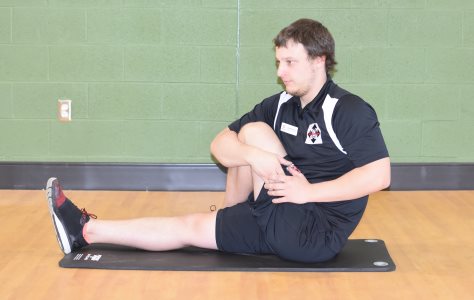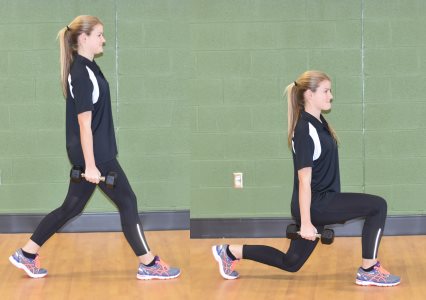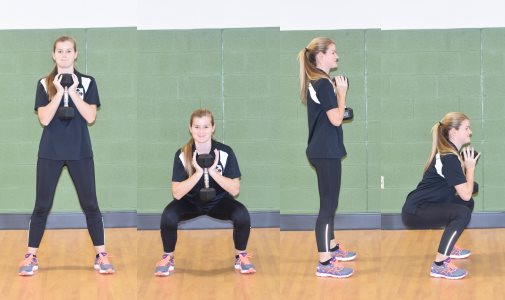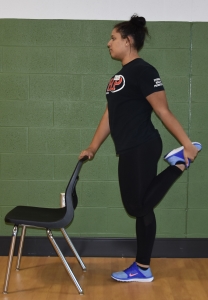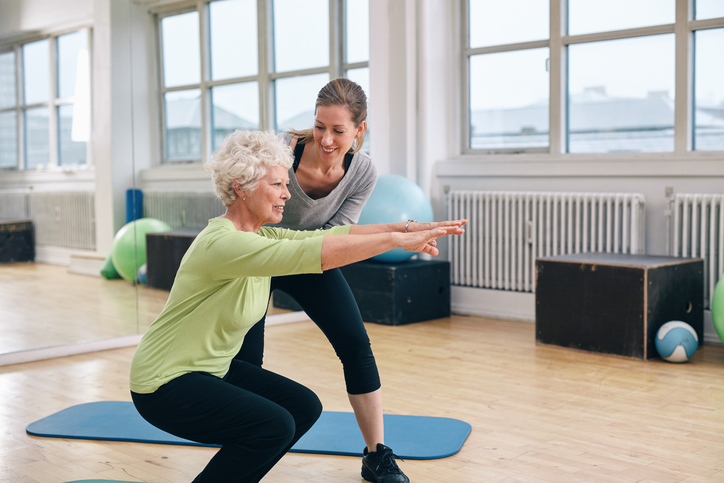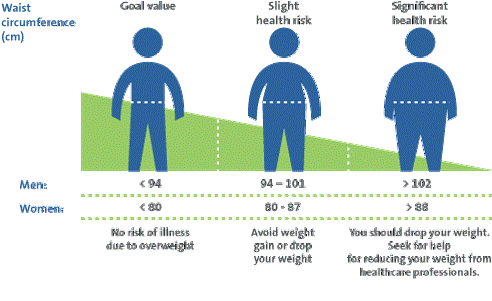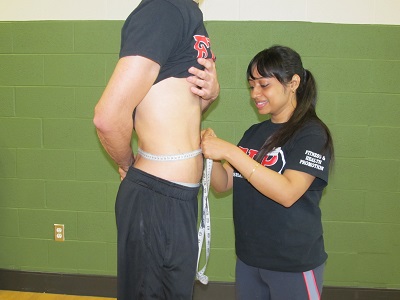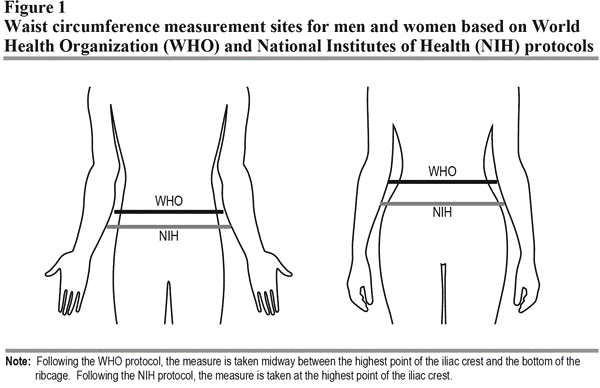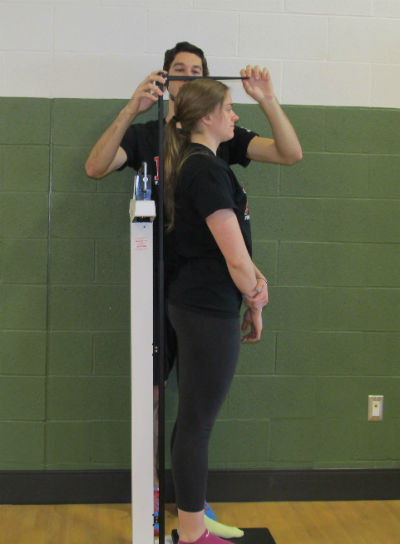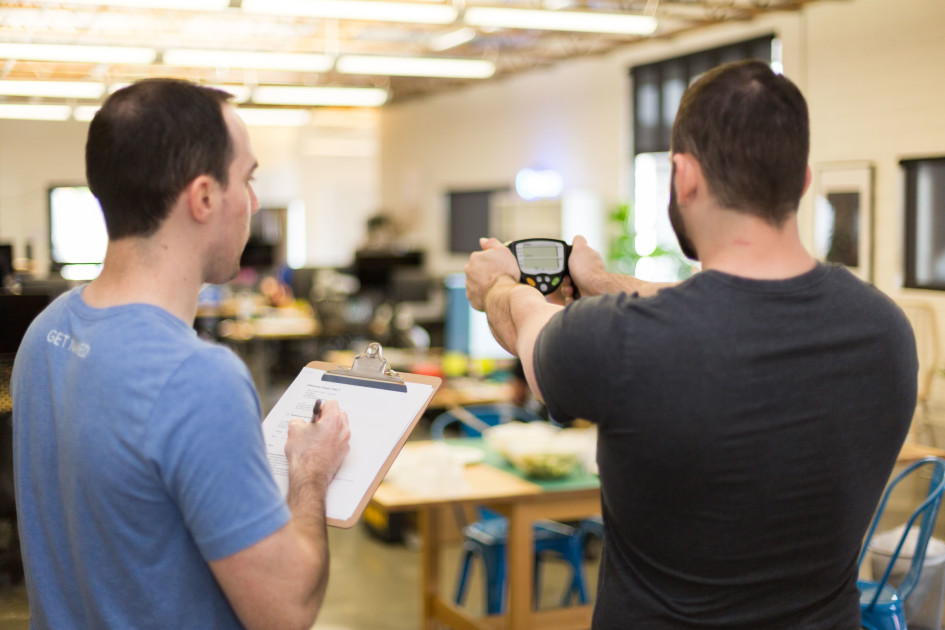The hip bridge is an introductory movement that promotes strengthening the hips extensors. For the average, healthy adult, more advanced forms of hip bridging will be required.
- Single-leg bridge
- Hip bridge with feet elevated
- Hip bridge on stability ball
Beginner: Cable Pull Through
| Movement Pattern: Hinge | Target: Gluteals | Synergist(s): Hamstrings, Spinal Erectors | |
| Exercise | 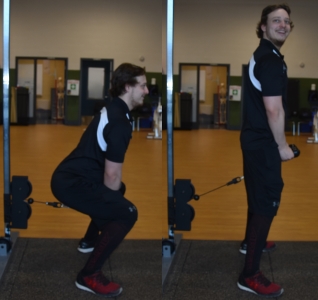 |
||
| Regressions: | Good Morning | Progressions: | Deadlift | Swing |
| Key Teaching Points | |||
|---|---|---|---|
|
Stand with feet shoulder width apart, a slight bend in the knees. Keeping spine neutral, hinge (pivot) at the hips so torso is bent forward and allow arms to hang down between legs. With arms extended, grasp the rope attachment on the cables. Keeping the arms extended, stand straight up attention, pulling the rope forward so that it rests slightly in front of your body. Return back to starting position, ensuring you maintain neutral spine throughout the motion. |
|||
| Common Error(s): | Rounded lower back | Not engaging core | ||
| Spotting: | |||
Beginner: Single Leg Hip Bridge
| Movement Pattern: Hinge | Target: Hamstrings | Synergist(s): Gluteals | |
| Exercise | 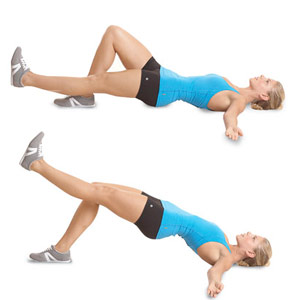 |
||
| Regressions: | Seated Leg Curl | Progressions: | Leg Curl |
| Key Teaching Points | |||
|---|---|---|---|
|
|||
| Common Error(s): | Inappropriate momentum | Arching the upper back | ||
| Spotting: | Mirror Client Level | ||
Intermediate: Barbell Hip Thrust
| Movement Pattern: Hinge | Target: Gluteals | Synergist(s): Hamstrings, Spinal Erectors | |
| Exercise | 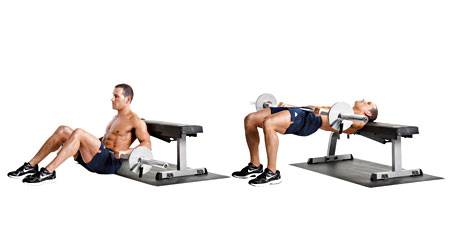 |
||
| Regressions: | Hip Bridge | Single Leg Bridge | Progressions: | |
| Key Teaching Points | |||
|---|---|---|---|
Variations:
|
|||
| Common Error(s): | Not engaging core | Inappropriate momentum | ||
| Spotting: | |||
Advanced: Kettlebell Swing
| Movement Pattern: Hinge, Lower Body | Target: Gluteals | Synergist(s): Hamstrings, Spinal Erectors | |
| Exercise |  |
||
| Regressions: | Good Morning | Back Extension | Progressions: | Deadlift | Snatch |
| Key Teaching Points | |||
|---|---|---|---|
|
1. Get set: Stand with feet shoulder-width apart, toes pointed out, and knees slightly bent; look straight ahead. Hold the kettlebell between your legs using a two-handed, overhand grip. 2. Swing it: Keeping the arch in your lower back, bend your hips back until the kettlebell is between and behind your legs; then forcefully squeeze your glutes to extend your hips (imaging you are going to jump forward) and propel the weight up to chest height. You should not feel as though you are lifting the weight up with your shoulders, rather your hips/hamstrings should be doing all the work. 3. Bring it down: Once the bell has reached chest height, let the weight fall (i.e. swing back) between your legs as you bend your hips and slightly bend your knees. Aim to maintain a tight core throughout. Avoid dropping into a squat on the descent. Aim to maintain just a slight bend in the knee and use the hips and hamstrings to decelerate the kettlebell, not your quadriceps. Once the kettlebell passes back beneath your hips, extend your hips and knees to reverse the momentum as you immediately begin the next rep. Variations
|
|||
| Common Error(s): | Not engaging core | Rounded lower back | ||
| Spotting: | |||

